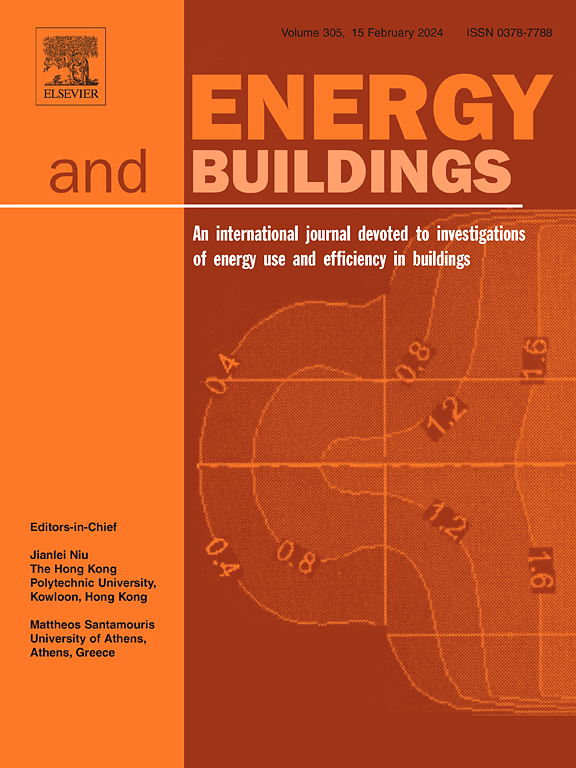Frost resilient energy recovery ventilation system for dwellings in Canada’s North and Arctic: A comparative study between a regenerative dual core and conventional single core systems
IF 6.6
2区 工程技术
Q1 CONSTRUCTION & BUILDING TECHNOLOGY
引用次数: 0
Abstract
In the Canadian Northern climate, the winter outdoor temperatures may fall below −40 °C. With an average indoor temperature of 20 °C, a 60 °C increase in temperature applied to the incoming outdoor air represents a significant heating load. One problem faced by exhaust air heat/energy recovery systems in winter is the build-up of frost on the heat exchanger surfaces. The accumulation of frost in the core slows the transfer of heat/energy between the two airstreams and can impede ventilation and the ineffectiveness of HRVs/ERVs can lead to even poorer IAQ. This paper presents a novel air-to-air regenerative energy recovery ventilation system that employs a cycling heat exchanger as a defrost strategy to ensure a continuous delivery of outdoor air to the house. The dual core ERV system was assessed in real-world environment through a field trial, using the Canadian Centre of Housing technology (CCHT) twin houses. The side-by-side evaluation compared the winter performance of a dual core regenerative ERV and conventional single core ERV in term of ventilation rate, thermal performance that includes sensible and total heat transfer effectiveness and temperature of air supplied to the house. The obtained results showed no sign of frost problems and the dual core ERV provided continuous delivery of outdoor air without stopping to defrost, unlike the conventional single core ERV which spent up to 7.5 h per day defrosting. The Test House with the dual core ERV had higher ventilation rate by 23 % than the Reference Housee with single core ERV, was capable of providing air at the supply outlet at up to 3 °C higher temperature than the air supplied by a single core ERV, and had lower whole house energy consumption by ∼ 5 %.
求助全文
约1分钟内获得全文
求助全文
来源期刊

Energy and Buildings
工程技术-工程:土木
CiteScore
12.70
自引率
11.90%
发文量
863
审稿时长
38 days
期刊介绍:
An international journal devoted to investigations of energy use and efficiency in buildings
Energy and Buildings is an international journal publishing articles with explicit links to energy use in buildings. The aim is to present new research results, and new proven practice aimed at reducing the energy needs of a building and improving indoor environment quality.
 求助内容:
求助内容: 应助结果提醒方式:
应助结果提醒方式:


